Tabouli—also spelled Tabbouleh—is an easy and refreshing Middle Eastern salad with parsley, tomatoes, bulgur, lemon juice, scallions, and olive oil.
It has a bright and herbaceous taste with sweet, tart, and nutty undertones, making it the perfect side dish for rich, creamy, and spiced dishes.
Serve it as part of a cozy spread with other Middle Eastern and Mediterranean recipes.
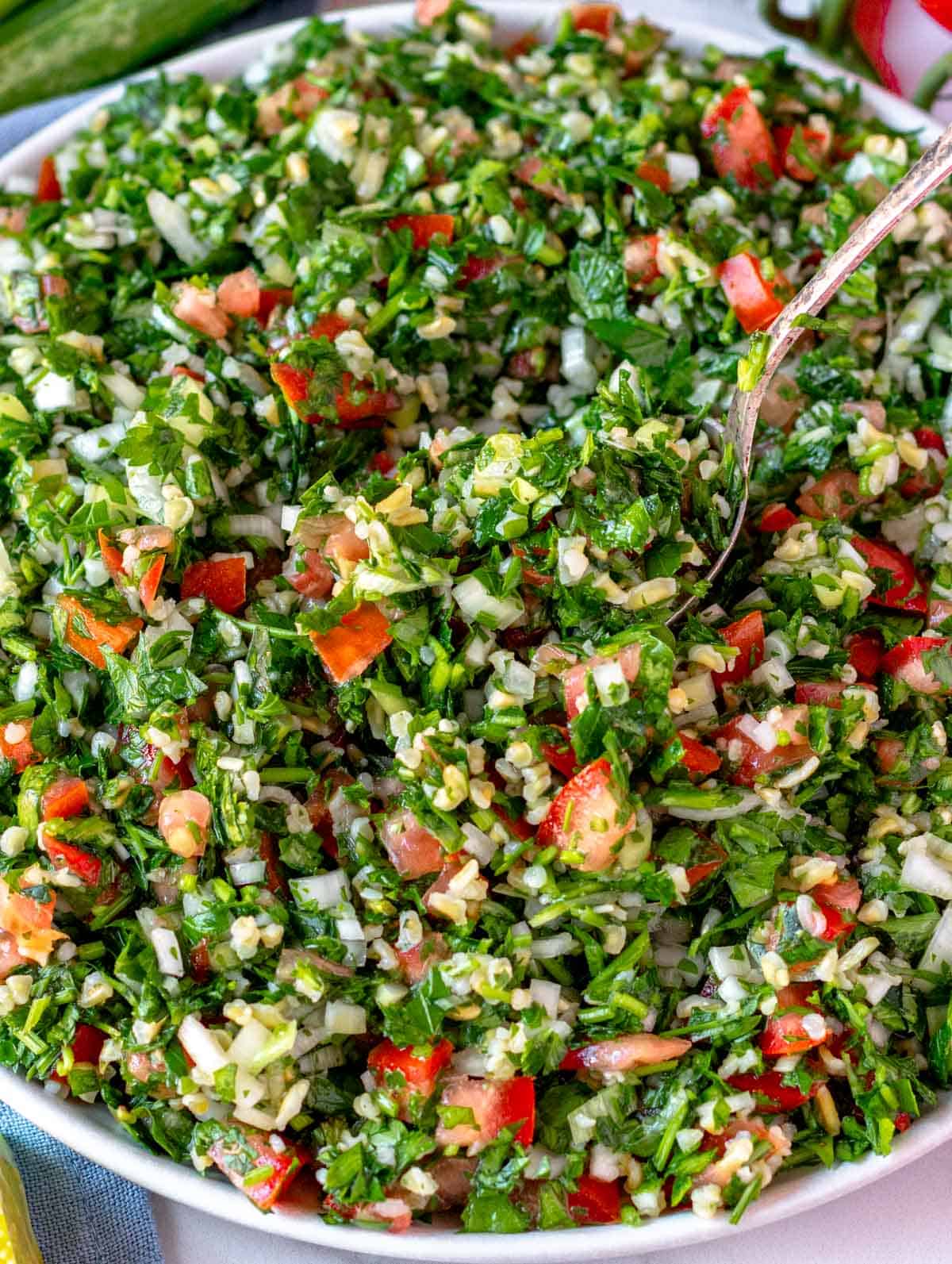
What is tabouli?
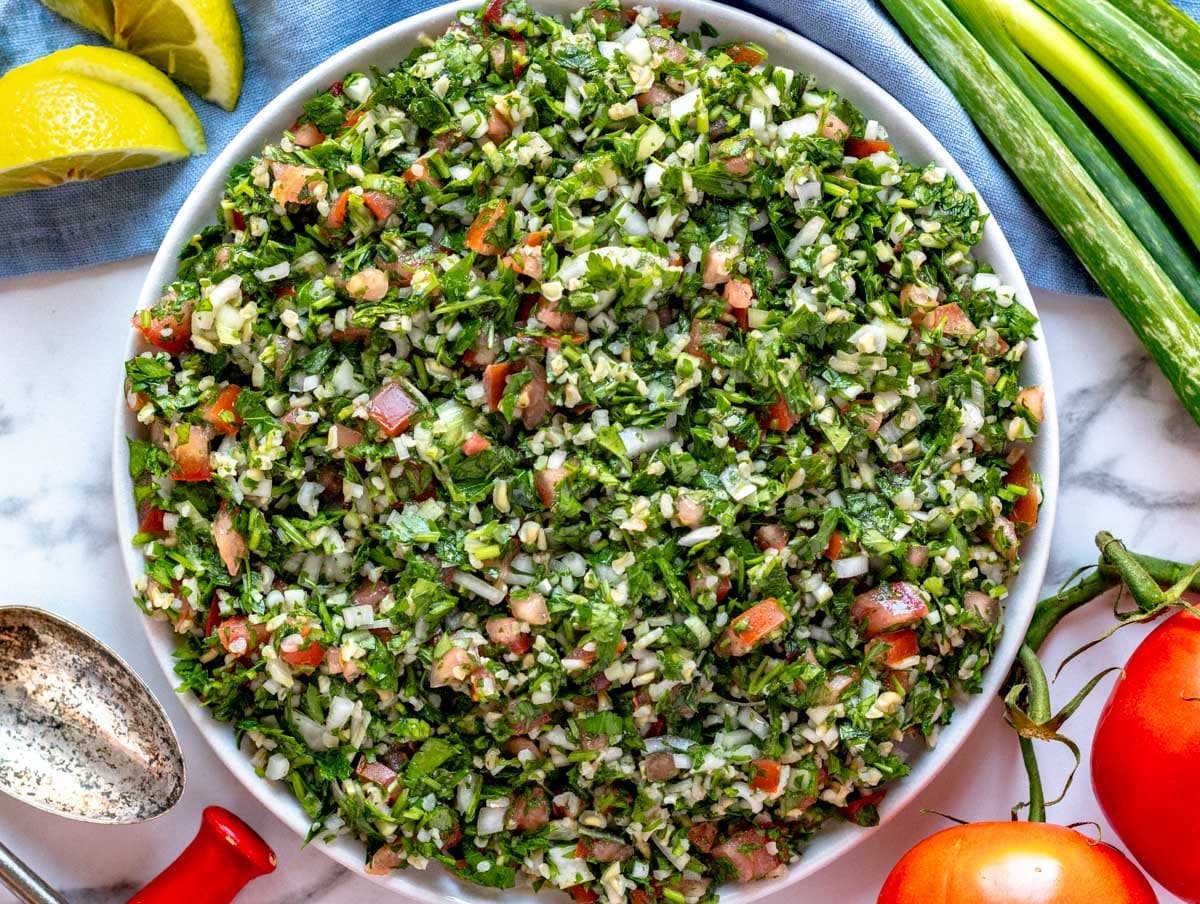
Tabouli is a bright parsley salad hailing from Lebanon and Syria.
Like tahini salad, shirazi salad, Piyaz, and fattoush, tabbouleh is widespread across Eastern Mediterranean and Middle Eastern regions.
Tabouli is easy to make with simple and affordable ingredients. It packs plenty of flavor, it’s healthy, and it’s the perfect side dish for most Middle Eastern recipes.

We loved it so much that we also made a lentil tabbouleh and one with quinoa. See variations below.
Serve tabbouleh as part of a spread or mezze platter at a family gathering, cookout, or barbecue.
You’ll love it with hummus, falafel, baba ganoush, mutabal, fatteh, and warm pita bread.
Ingredients for tabbouleh
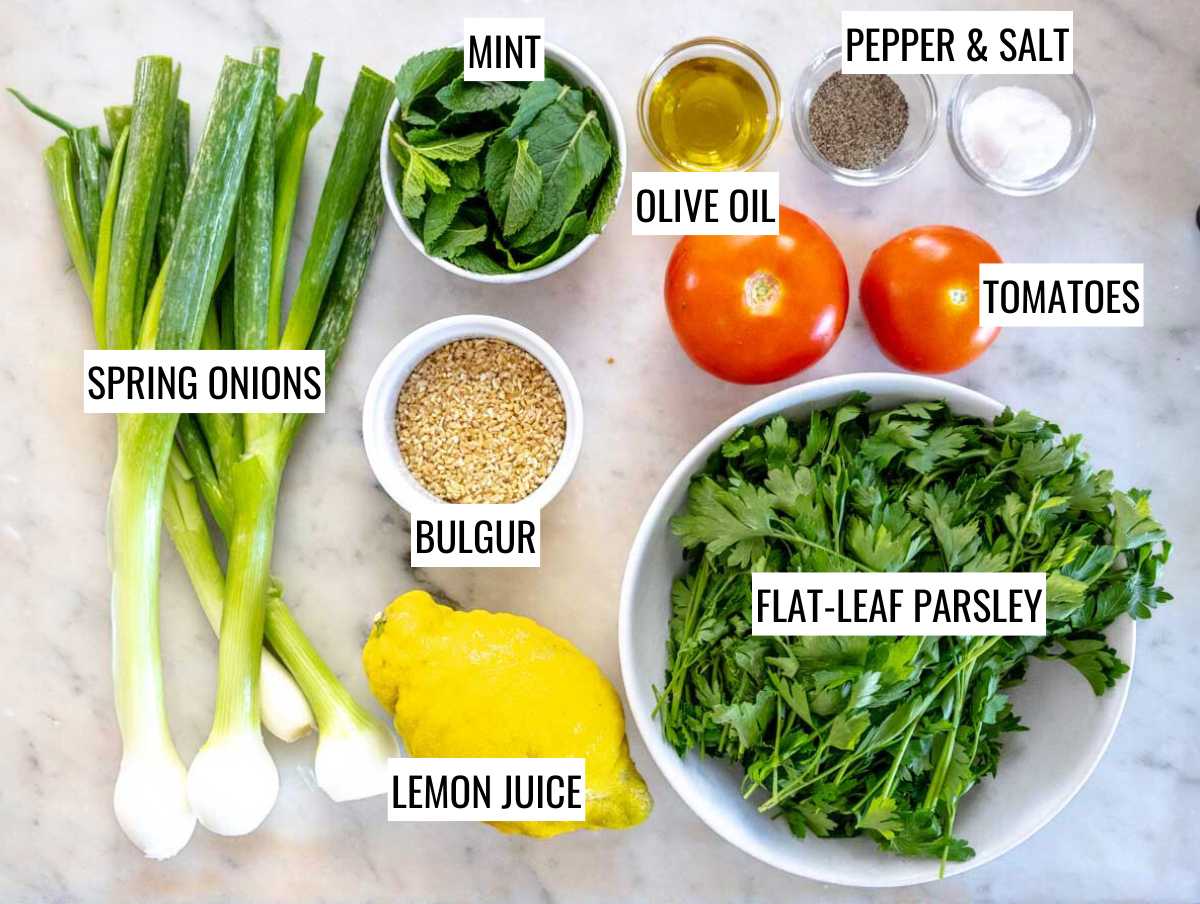
Quantities are in the recipe box at the bottom of the page.
Fresh parsley
Flat-leaf or Italian parsley is the main ingredient in tabouli salad.
Tabouli should be mostly green, so you’ll need a lot of parsley.
We recommend removing the larger stems and chopping the leaves with a sharp chef’s knife on a cutting board.
Some recipes call for chopped parsley in a food processor. If doing so, pulse rather than blend until you reach a finely chopped texture.
Mint
Mint is optional. We add finely chopped fresh mint leaves.
Generally, tabouli has no other fresh herbs except parsley and mint.
Tomatoes
You can use ripe tomatoes like vine, Roma, beefsteak, or heirloom tomatoes.
Try to get them in season at a farmers’ market, as organically grown tomatoes tend to be less watery and sweeter.
We recommend a sharp knife or a serrated knife to chop them into small pieces.
If the tomatoes are very watery, you can let them drain in a fine mesh strainer for 10 minutes while you chop the parsley.
You can substitute pomegranate seeds for tomatoes.
Scallions or green onions
Scallions—also known as green and spring onions—are another key ingredient in a traditional tabouli salad recipe.
They add tang without being overpowering.
Like the other ingredients, they are also finely chopped up until their light green parts.
You can substitute white onions for scallions.
Bulgur
We use regular bulgur wheat, which you can find in most supermarkets.
Bulgur – also called riffoth and burghul – is produced from cracked parboiled groats of durum wheat and other wheat species.
You can boil the bulgur in lightly salted water; however, authentic Tabbouleh is made with soaked bulgur.
If you don’t have bulgur, you can make a less authentic but delicious tabouli recipe with lentils, quinoa, buckwheat, millet, couscous, amaranth, and farro.
Lemon Juice
Freshly squeezed lemon juice adds freshness and acidity.
Olive Oil
We recommend using extra virgin olive oil.
Salt and Pepper
We use sea salt and freshly ground black pepper.
Lettuce
Romaine lettuce leaves are optional.
You’ll see chopped lettuce added to the other ingredients in some variations.
In other variations, lettuce is used as a vessel to serve and eat the tabouli.
We like to pick small lettuce leaves and stuff them with Tabbouleh so people can easily grab them.
Add-ins (optional)
Other ingredients not included in the traditional tabbouleh recipe but that you can add in if you like are cucumber, cherry tomatoes, crushed or minced garlic clove, feta cheese, olives, quinoa, or cauliflower rice instead of bulgur.
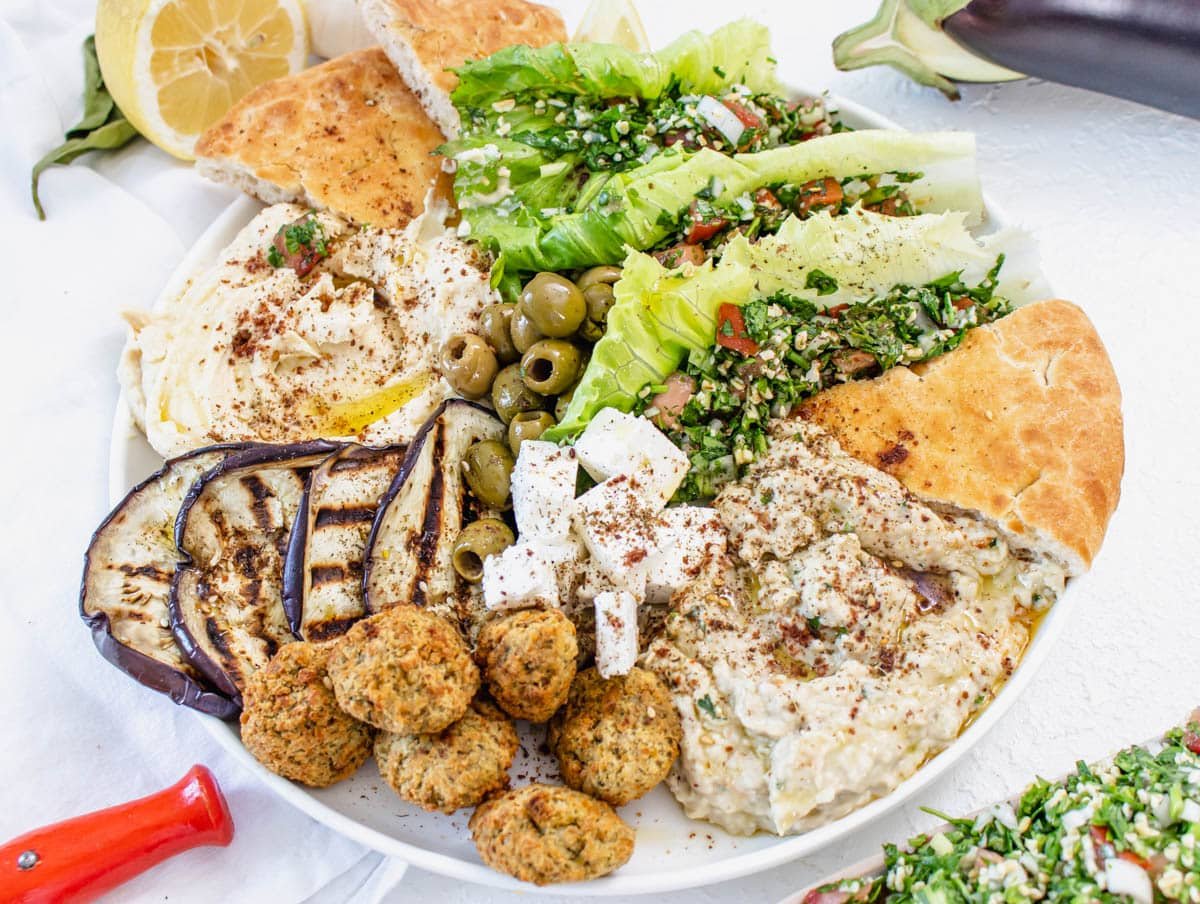
How to make tabouli salad
1. Prepare the bulgur
Boil bulgur wheat in water per package instructions, drain, and let cool down for 10 minutes and add it to a mixing bowl.
Alternatively, soak the bulgur in a bowl with hot water for 20 minutes. Then, squeeze the water out of the bulgur with your hands and add it to a mixing bowl.
Note: soaking the bulgur is more authentic when making Tabbouleh and will give you a chewier texture.
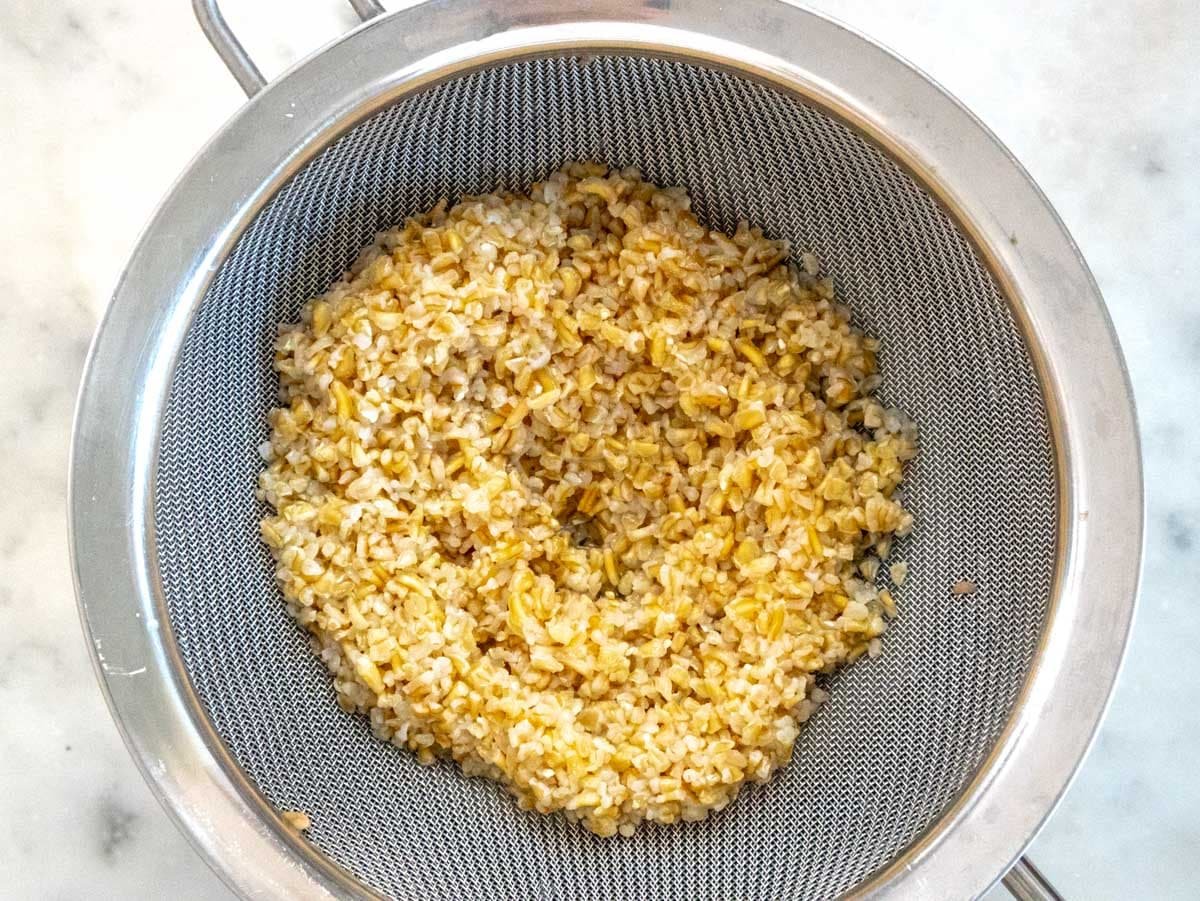
2. Chop the vegetables
Finely chop the tomatoes into about 1/5-inch (0.5 cm) pieces with a sharp chef’s knife or a serrated knife and add them to the bowl with the bulgur.
Rinse and dry parsley and mint with a kitchen cloth. Cut off the large stems, finely chop them, and add them to the bowl.
Finely chop the scallions, only the white and light green parts, and add them to the bowl.
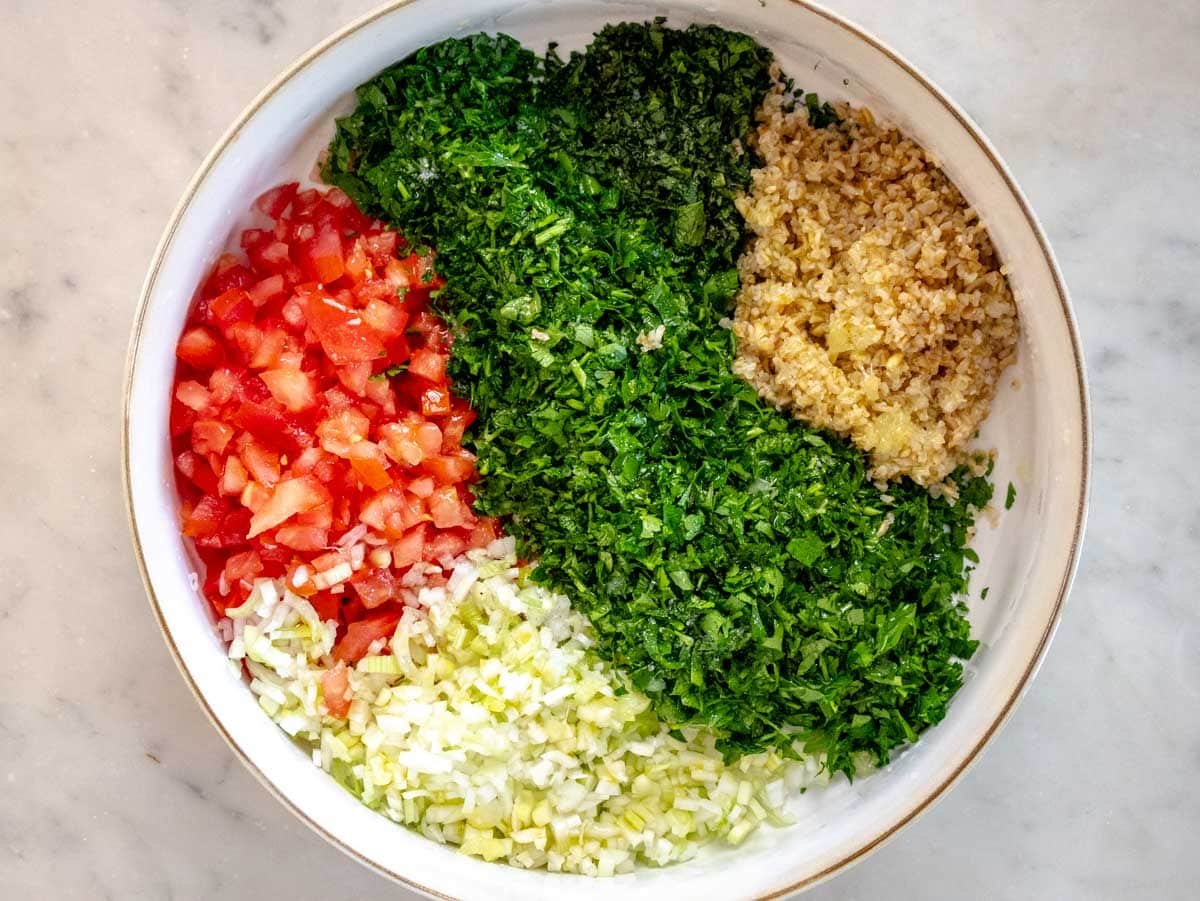
3. Season and serve
Season with extra virgin olive oil, lemon juice, salt, and black pepper.
Mix well with a spoon, taste, and adjust for salt and lemon juice before serving cold or at room temperature.
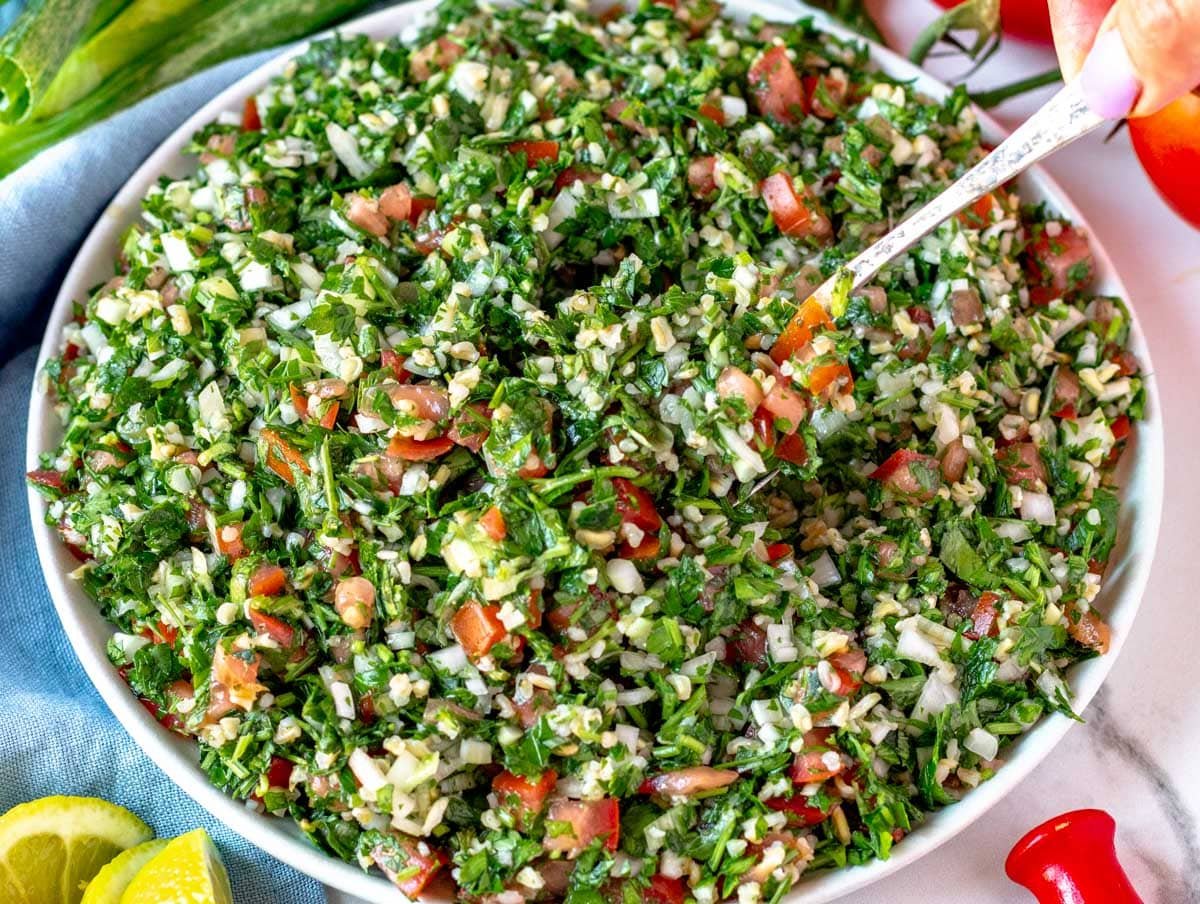
Serving suggestions
The best way to enjoy tabbouleh is to serve it with other Middle Eastern and Mediterranean recipes.
For example, you can make a cozy spread with hummus, baba ganoush, mutabal, zaalouk, falafel, grilled eggplant, grilled zucchini, pita bread, and many other Middle-Eastern recipes.
It’s also delicious as a fresh side dish next to chickpea fritters, lentil patties, and zucchini fritters, with a dollop of tzatziki on the side.
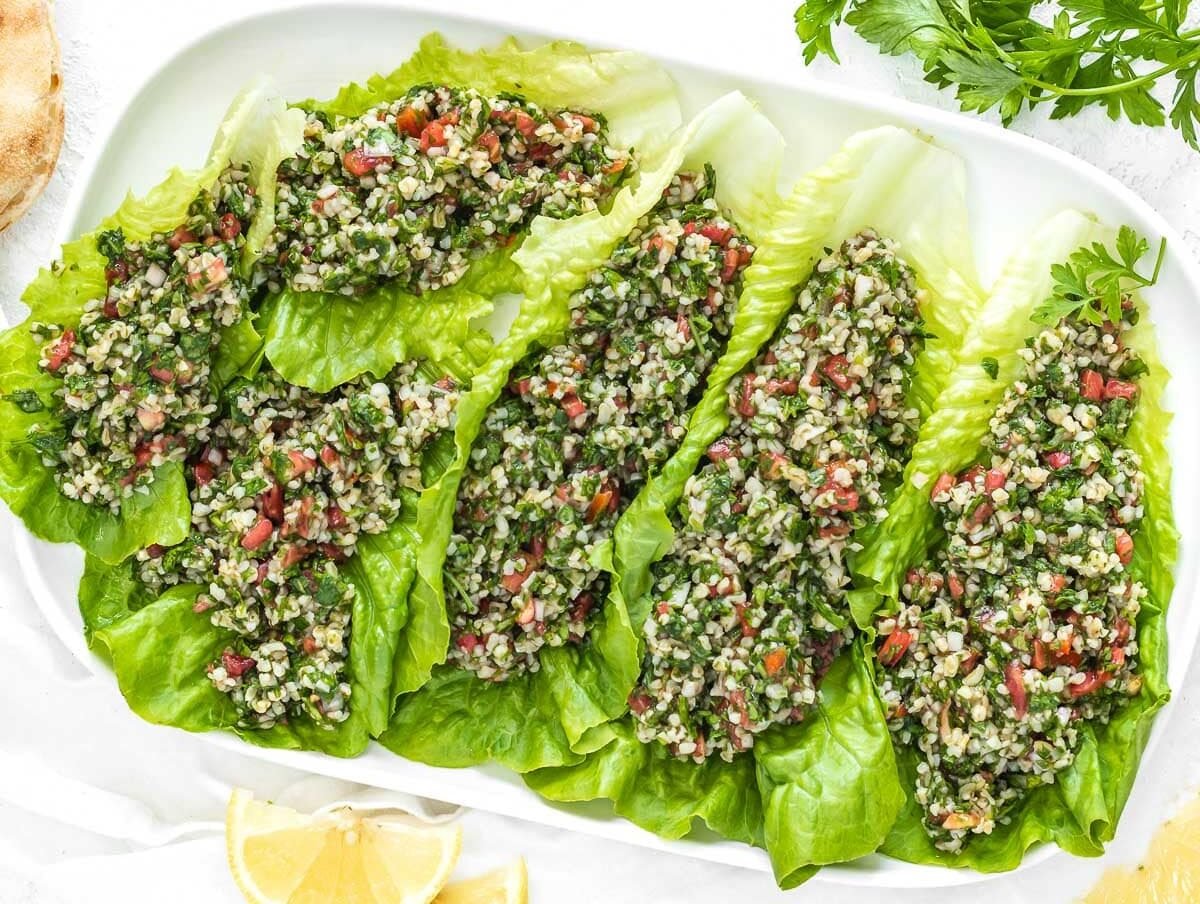
Variations
Quinoa tabbouleh: Substitute boiled quinoa for bulgur.
Lentil tabbouleh: Substitute brown, green, or black lentils for bulgur.
Chickpea tabbouleh: Substitute chickpeas for bulgur.
Storage
Make ahead: You can make tabouli the day before; however, we recommend seasoning it shortly before serving to prevent the tomatoes from releasing too much liquid.
Refrigerator: Store leftovers in an airtight container in the fridge for two days.
Freezer: we do not recommend freezing tabouli salad.
Similar recipes
SALADS: Check out our compilation of best salad recipes for more delicious salad ideas.
Our favorites include chickpea salad, pearl couscous salad, lentil salad, Mediterranean salad, Greek chickpea salad, white bean salad, rice salad, farro salad, and couscous salad.
MIDDLE EASTERN: Stuffed bell peppers, sumac onions, mujadara (lentils and rice), whole roasted cauliflower, and spinach stew.
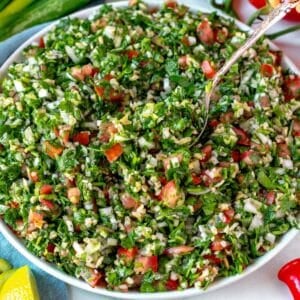
Tabouli (Tabbouleh)
Ingredients
- ¼ cup bulgur
- 3 packed cups flat-leaf parsley finely chopped
- ¼ cup mint leaves finely chopped
- 5 spring onions finely chopped
- ½ pound tomatoes cut into small dice
- 2 tablespoons extra virgin olive oil
- 2 tablespoons lemon juice
- 1 teaspoon salt or more to taste
- ⅛ teaspoon black pepper
Instructions
- COOK THE BULGUR: Boil ¼ cup bulgur in water per package instructions, drain, and let cool down for 10 minutes then add it to a mixing bowl.Alternatively, soak the bulgur in a bowl with hot water for 20 minutes. Then, squeeze the water out of the bulgur with your hands and add it to a mixing bowl.
- ADD THE VEGETABLES: To the same bowl, add ½ pound tomatoes (cut into small dice), 3 packed cups flat-leaf parsley, ¼ cup mint leaves, and 5 spring onions (all finely chopped).Season with 2 tablespoons extra virgin olive oil, 2 tablespoons lemon juice, 1 teaspoon salt, and ⅛ teaspoon black pepper.
- MIX AND SERVE: Mix well with a spoon, taste, and adjust for salt and lemon juice before serving cold or at room temperature.It's delicious with hummus, falafel, and warm pita bread.

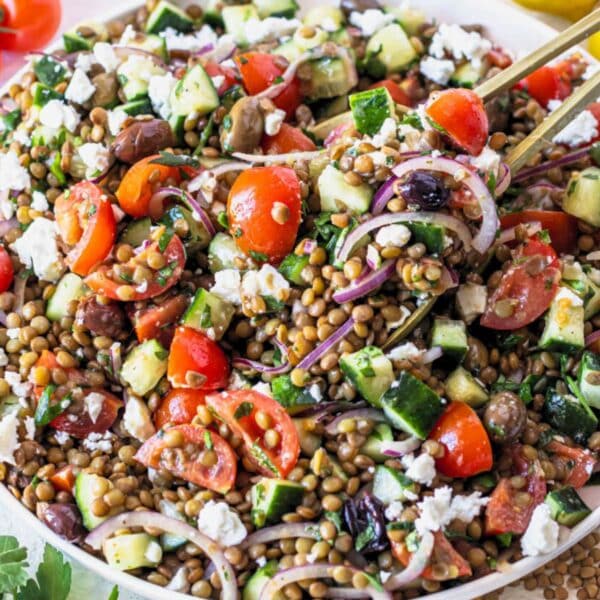
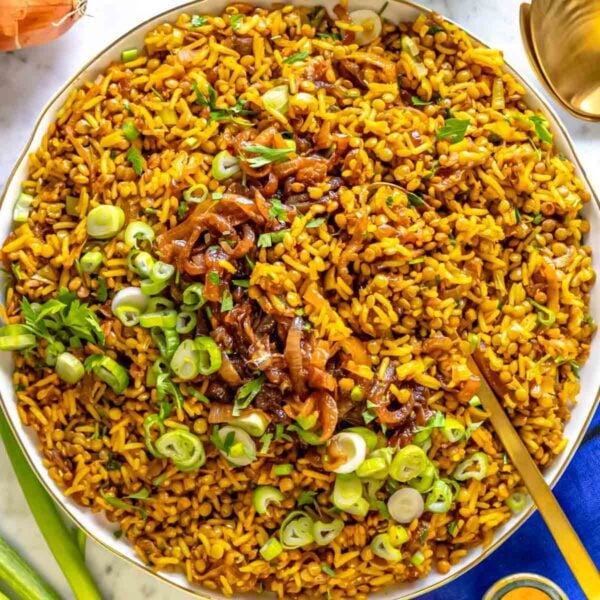
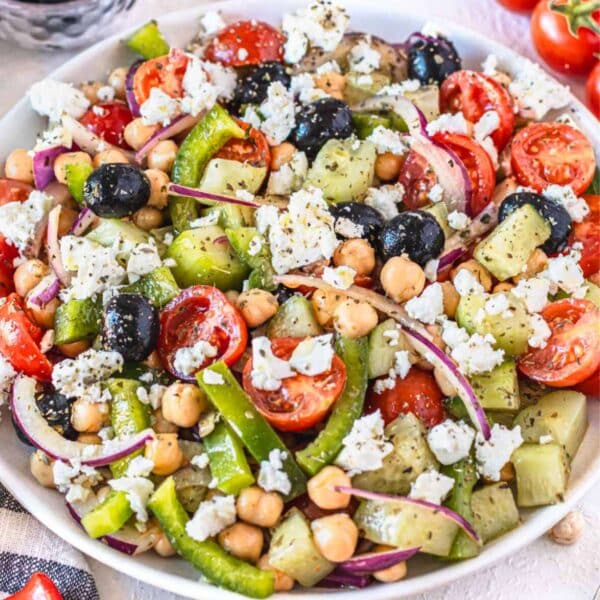
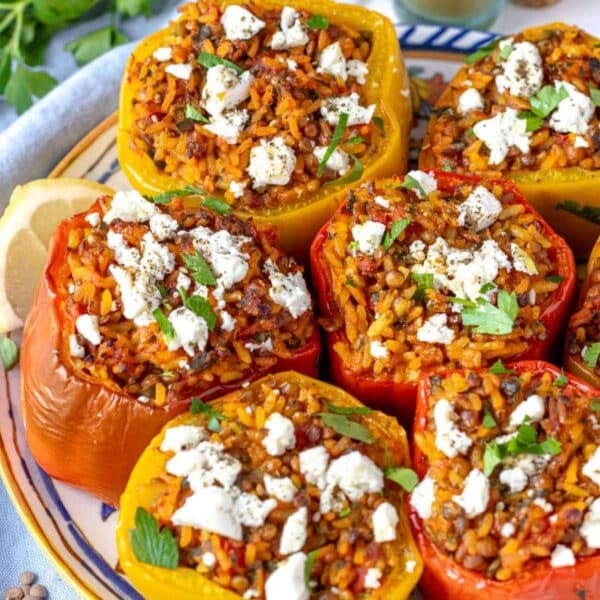
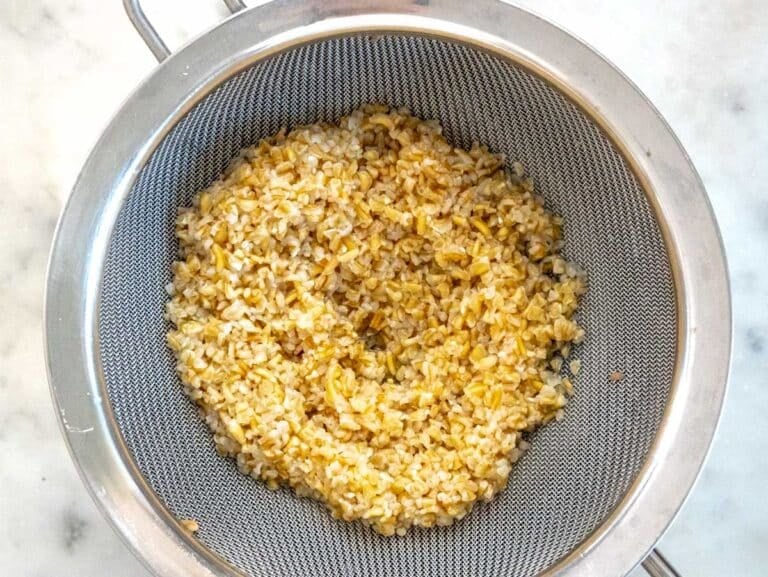
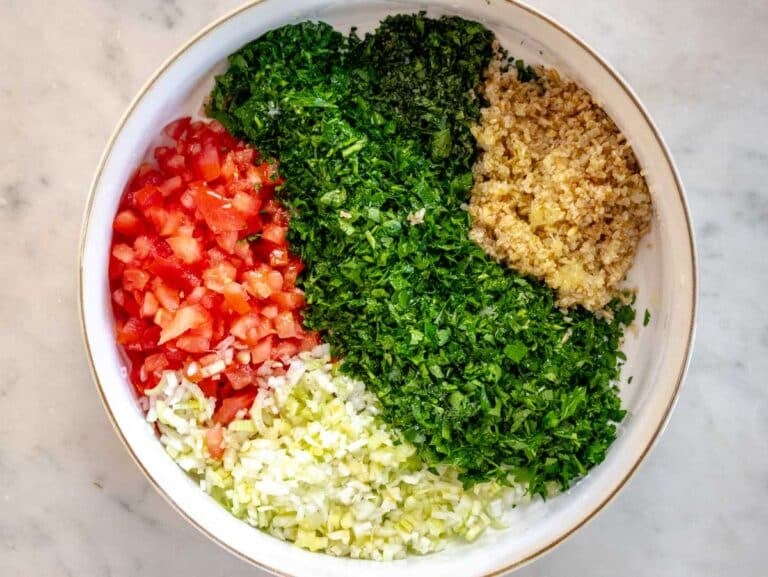


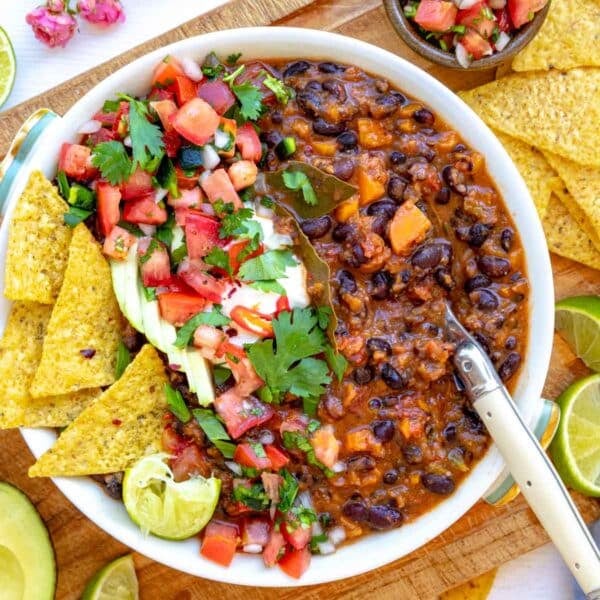
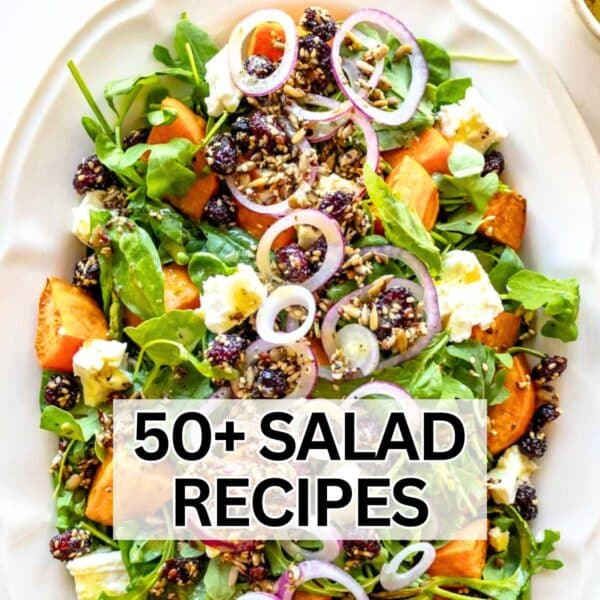
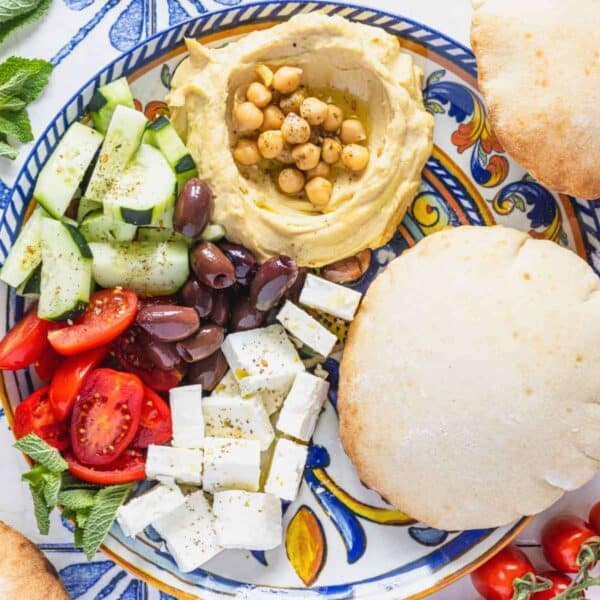

I’m glad to see a recipe for tabbouleh salad that has the right ratio of parsley to bulgur. Most times it has way to much bulgur for the salad. Tabbouleh is about showcasing the parsley. A traditional short cut is to use fine grade bulgur and soak it in the lemon juice. This way you don’t have to bother with draining and squeezing the water out of the bulgur. You might need a little more lemon juice though.
Simply delicious